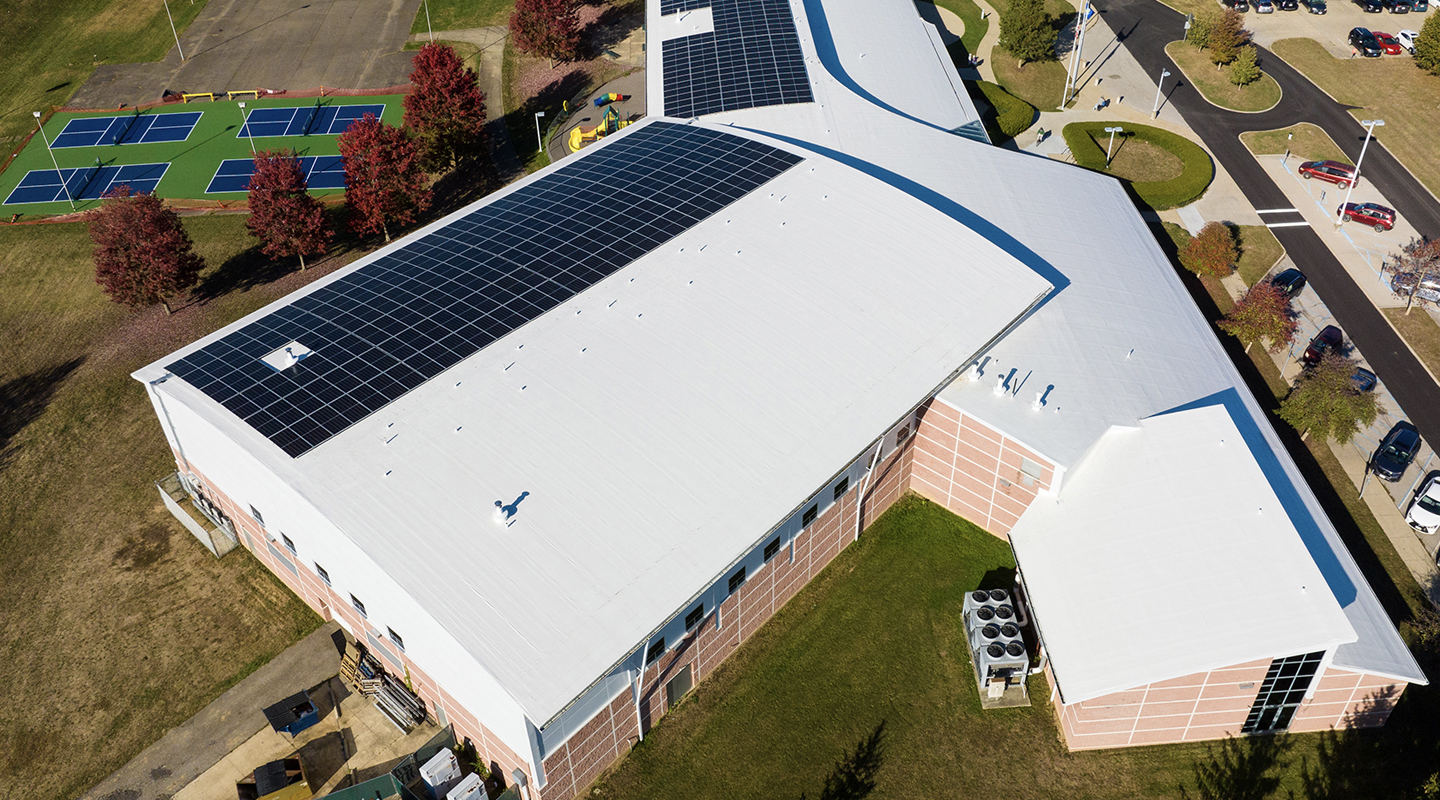- Systems
Membranes
Metal Roof and Wall Systems
Coatings and Retrofit
- Components
- Technical Documents
- Resources
- Applications
- About
- Contact
In addition to our internal processes that make Duro‑Last a more sustainable company, we have also earned third-party certifications to verify the sustainability of our products. This makes Duro‑Last a great option for environmentally conscious building projects. Learn more about how our membranes can help your buildings obtain credits under the LEED® rating system, as well as Green Globes® certification here.
With a focus on product design, product manufacturing, membrane durability, corporate governance and innovation, this standard represents our commitment to manufacturing sustainable products through sustainable practices. Duro-Last has achieved NSF/ANSI 347 certifications on the following membranes:
NSF/ANSI 347 is the leading consensus standard for evaluating and certifying sustainable attributes of single-ply roofing membranes over their entire life cycle. Using a point system to evaluate roofing products against prerequisite requirements, they focus on the five key areas of:
Duro-Last is the first manufacturer in the North American roofing industry to publish a product-specific PVC EPD. Certified by the global public health organization NSF International, Duro‑Last EPDs report environmental impact data, which assists building owners, contractors, architects and designers in making more informed purchase decisions.
At Duro-Last, we prioritize reducing waste and recycling in our own operations and facilities and are thrilled to shine a spotlight on the efforts and achievements of our contractors and sister businesses.
Give your roof new life with our take back program. To date, more than 100 million pounds of PVC have been saved from landfills.
Our highly reflective membranes can greatly reduce energy costs, making Duro-Last the ideal cool roof option.
Long lifespan, circularity and low-carbon-footprint materials are key to meeting sustainability objectives. Our collaboration with building scientists at DuPont resulted in a unique roofing system designed to deliver 600 consecutive months of unparalleled, sustainable roof and insulation performance.
Green Earth Roofing Solutions, based in Ludlow, Mass., turned to Duro-Last to supply sustainable roofing materials for three extraordinary solar roof projects in New England.
Duro-Last membrane helps Athens Community Center achieve sustainability objectives in reroof project.
Duro-Last prioritizes waste reduction and recycling at every step of the product life cycle. To date, we have recycled more than 100 million pounds of PVC material through our sustainable manufacturing operations and Recycle Your Roof program.

During manufacturing, edge trim and scrap are recycled back into production. This allows Duro‑Last to reduce our carbon footprint and recycle virtually all our manufacturing waste.
Our custom-fabricated roof systems allow roofing contractors to reduce scrap on the jobsite — meaning less waste ends up in a landfill.
At the end of a Duro-Last Roofing System’s time on the rooftop, our Recycle Your Roof take back program gives the material new life. Since 100% of mechanically attached PVC roofing material can often be recycled, we are able to transform it into new products such as ROOF-TRAK® walkway pads, ProFlex® concrete expansion joints and Protect-All® Flooring.
This program not only reduces the amount of material going to landfills, it also eliminates landfill and dumpster fees while contributing to green building rating systems such as LEED, Green Globes and the Living Building Challenge™. To learn more about recycling your roof membrane, contact a Duro‑Last Sales Representative or call Duro-Last at 888.301.7712.
By reflecting up to 88% of the sun’s energy, reflective white Duro-Last PVC roofing systems can greatly reduce energy consumption and electricity bills by exceeding industry standards for reflectivity and thermal emissivity.
Our highly reflective membranes are particularly helpful in reducing peak energy demand, or the sharp peak in electrical demand observed in almost every building during the busiest hours of the day.
Peak energy demand:

Cool roofing technology is one of the best ways to shrink peak demand. A recent analysis demonstrates that reducing peak demand and maximizing the net energy savings offered by cool, white roofs can benefit both new and existing buildings in all climates within North America.
The Duerson Corporation, a Duro-Last Platinum Contractor, coordinated the recycling of almost every aspect of this 27,600-square-foot roofing system through our Recycle Your Roof program.
Roofing Systems
Components